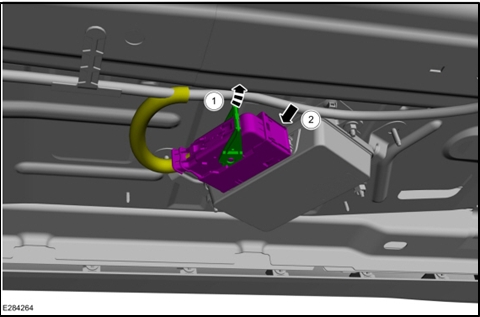| By Chilton Staff |
The ChiltonLibrary OEM (original equipment maker) data is written by Ford and Lincoln engineers to aid dealer technicians, so it’s detailed and complete.
You’ll find the Ford and Lincoln OEM data is rich with authoritative, step-by-step procedures, illustrations, specifications, and more that ChiltonLibrary users require. And, as vehicles evolve, ChiltonLibrary keeps pace, covering newer systems such as electric vehicles—like the F-150 Lightning, advanced driver assistance systems, and artificial intelligence (AI) technology.
There was a time in the early days of the immensely popular Model T when Ford rested on its engineering laurels for 19 years. During that time, Henry Ford insisted on no changes and famously said that buyers could have any color—as long as it was black.
The Model T was almost a religious experience for Henry Ford. On returning from a trip in 1912, the engineering staff had built an improved Model T car and when it was presented to Henry Ford, he was so angry that he tore off a wooden door and had the car destroyed. That was the last attempt to make any change to the Model T. The world’s first billionaire would not listen.1
In 1927, Ford finally relented. Seeing the public had moved on from the Model T, but without a model to replace it, he closed the plant, putting approximately 100,000 workers out of work. Then a small team began designing a new car. In 1928, Ford introduced a new Model A, named after the company’s first vehicle, which was released in 1903.
From the experience, Ford learned that modern automakers must listen to customers and continually innovate. For example, these days many automakers incorporate AI in their vehicles—and Ford is no exception. Ford implemented an early version of machine learning in 2002 to detect misfire in gas engines. More recently, Ford introduced a system to switch between all-wheel drive (AWD) and two-wheel drive (2WD) without driver input, in response to weather and road conditions, to reduce gasoline consumption and improve traction.
Detecting misfire
Ford’s 2002 misfire monitor evaluates information from sensors to illuminate a check engine light when misfires occur. Misfires can damage the catalytic converter, emit excessive hydrocarbons contributing to smog, reduce gas mileage, and cause the engine to stall.
The screenshot below shows an excerpt from ChiltonLibrary with Ford’s description of how the misfire monitor works for the 2002 Mustang.
Automated traction on the fly
To make vehicles safer and improve fuel economy, Ford introduced an AI-enhanced AWD system for some vehicles. Since 2WD uses less fuel, it’s the default, but when the system detects a need for better traction, it switches to AWD.
According to Ford, the system works faster than a human, determining in 10 milliseconds whether AWD is needed for the conditions, taking into account sensors monitoring data such as antilock brakes, outside temperature, and windshield wipers.2

Whether it’s a familiar system like brakes or newer technology, people can access the source with Chilton’s Ford-licensed data. Want to check out ChiltonLibrary? Request a free trial or connect with your Gale representative.
1. Weiss, H. Eugene. Chrysler, Ford, Durant, and Sloan, Founding Giants of the American Automotive Industry. Jefferson, North Carolina: McFarland & Company, Inc., Publishers, 2003, 46–47.
2. Ford Media Center, “New Ford Edge SUV Uses Artificial Intelligence to Help Improve Grip and Reduce Fuel Costs for Drivers,” November 29, 2018.



